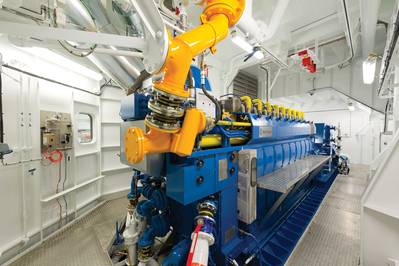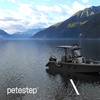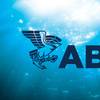Rolls-Royce Marine Gas Engines: U.S. EPA Approval
Rolls-Royce said the U.S. Environmental Protection Agency (EPA) approved for sale in the U.S. market its marine gas engine designed to improve fuel efficiency, cut harmful methane emissions and meet international environmental standards set to take effect in 2016.
“This Certificate of Conformity by the EPA for our latest gas engine is good news for the US marine industry because LNG as a vessel fuel is indisputably the best long-term solution for ship owners,” said Neil Gilliver, President, Merchant, Rolls-Royce.
The EPA Certificate of Conformity is issued for the C-engine range from Rolls-Royce. These engines are already in operation on car ferries and coastal ferries in Europe, and are being installed on the world’s first gas powered tugs to be used in operation for the major Norwegian oil company Statoil.
“The EPA approval gives us a head start in the US market,” said Gilliver, “and we are proud to be able to provide ship owners with an efficient and long-term solution for reduced fuel consumption and emissions. Furthermore, this latest C26:33 engine, which is highly suitable for tugs, articulated tug barges, ferries, coastal vessels and offshore support vessels, has cut methane slip to very low levels.”
The Rolls-Royce marine gas engine ranges fulfill the requirements for operation in Emission Control Areas and the very strict International Maritime Organization (IMO) Tier III rules that come into force in 2016, and the forthcoming and even tougher Tier IV emissions limits.
About the C-engine type
In the latest C26:33 engine, C02 emissions are reduced by 22% compared to engines burning liquid fuel, NOx emissions are cut by 92%, while emissions of SOx and particulates are negligible. The design of the C26:33 cuts methane slip, which up until now has been seen as a disadvantage of gas engines, to very low levels. These engines are in operation on the cross-fjord road link ferry Boknafjord (engine room pictured right) and an Island Offshore platform supply vessel, on order for cargo vessels in Europe, and are being installed on the world’s first LNG fuelled tugs for Bukser & Berging to be used in escort operation for the major Norwegian oil company Statoil. The cylinder bore is 260mm and the stroke 330mm. Six, eight or nine cylinders in line give a power range at maximum continuous rating from 1,460kW to 2,910kW at 900rpm or 1,620kW to 2,430kW at 1,000rpm. The specific fuel consumption is low over the whole load range and engine efficiency is high at about 49%.
(As published in the October 2012 edition of Maritime Reporter - www.marinelink.com)











